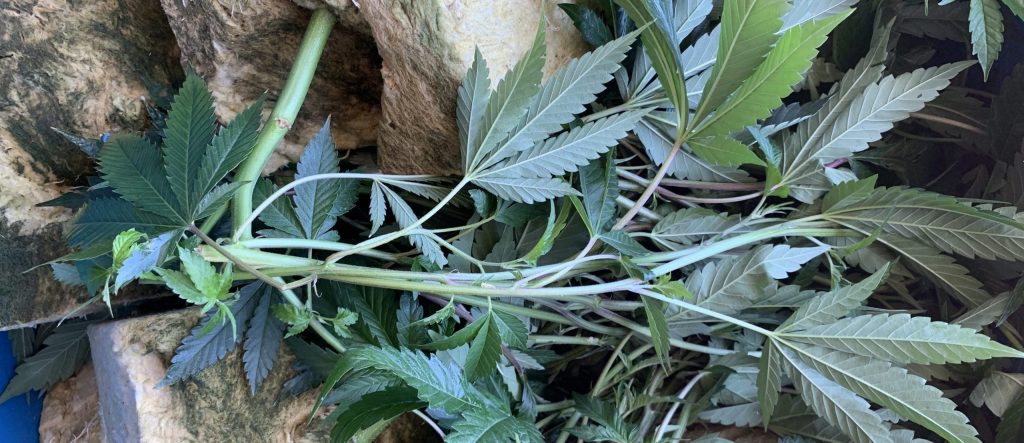Cannabis waste is an inevitable byproduct of the booming cannabis industry. As the popularity of cannabis products continues to rise, so does the amount of waste generated. In California, where cannabis is legal for both medical and recreational use, it is crucial to understand the various types of cannabis waste and how to manage it responsibly.
This comprehensive guide will delve into the different types of cannabis waste, explore regulatory requirements, and provide best practices for waste management.
Understanding the regulations on cannabis waste in California
California has implemented strict regulations to ensure the proper handling and disposal of cannabis waste. The state’s cannabis waste regulations are outlined in the Medicinal and Adult-Use Cannabis Regulation and Safety Act (MAUCRSA) and is regulated by the Department of Cannabis Control (DCC).
Under these regulations, cannabis waste must first be rendered unusable and unrecognizable before it can be disposed of. This includes rendering the cannabis waste into a non-retrievable form, such as mixing it with other materials like compost or green waste.
Additionally, California requires cannabis businesses to maintain records of all cannabis waste generated, including the type and quantity of waste, as well as the method of disposal. These records must be kept for a minimum of three years and made available for inspection by the regulatory authorities.
Failure to comply with these regulations can result in hefty fines and the suspension or revocation of a cannabis business license.
Request a Free Cannabis Waste Consultation
Types of cannabis waste
There are several types of cannabis waste generated throughout the production and consumption process. Understanding these different types of waste is essential for developing effective cannabis waste management strategies. The primary types of cannabis waste include flower waste, trim waste, concentrate waste, packaging waste, and edible waste.
Flower waste: What it is and how to best manage it
Flower waste refers to the parts of the cannabis plant that are not used for consumption or extraction. This includes leaves, stems, and other plant materials. Flower waste is typically generated during the trimming process, where the usable buds are separated from the rest of the plant.
To manage flower waste, many cannabis businesses compost the organic material or repurpose it for other purposes, such as creating topicals or infused products.
Trim waste: Exploring the different uses for trim waste
Trim waste consists of the excess leaves and small buds that are removed from the cannabis plant during the trimming process. While trim waste may not be as potent as the flower, it still contains valuable cannabinoids and can be used to produce various cannabis products.
Some common uses for trim waste include making extracts, tinctures, and edibles. By utilizing trim waste, cannabis businesses can minimize waste and maximize their product offerings.
Concentrate waste: Managing waste from cannabis extraction processes
Concentrate waste is generated during the extraction process, where cannabinoids are extracted from the cannabis plant to create concentrates such as oils, waxes, or shatter. This waste typically consists of spent plant material and residual solvents.
To manage concentrate waste, it is important to follow proper extraction procedures and employ solvent recovery systems. These systems can help minimize waste and ensure the safe disposal of any remaining solvents.
Packaging waste: The environmental impact of cannabis packaging and sustainable solutions
The cannabis industry is notorious for its excessive packaging practices, leading to a significant amount of packaging waste. With the increasing demand for cannabis products, it is crucial to address the environmental impact of packaging waste.
Many cannabis businesses are now adopting sustainable packaging solutions, such as using recyclable or biodegradable materials. Additionally, some companies are exploring innovative packaging designs that reduce material usage while maintaining product quality and safety.
Compliance requirements for handling cannabis waste in California
Complying with the regulations on cannabis waste in California is crucial for all cannabis businesses. In addition to rendering waste unusable and unrecognizable, businesses must also ensure proper storage, transportation, and disposal of cannabis waste.
This includes using secure containers, maintaining appropriate temperature and humidity levels, and working with licensed waste haulers for disposal.
Furthermore, cannabis businesses must train their employees on proper waste handling procedures and provide them with the necessary protective equipment.
Regular inspections and audits should be conducted to ensure compliance with the regulations. By prioritizing compliance, cannabis businesses can avoid legal issues and contribute to a responsible and sustainable industry.
Best practices for managing and disposing of cannabis waste
To effectively manage and dispose of cannabis waste, businesses can implement several best practices. These include:
- Implementing a waste management plan: Develop a comprehensive plan that outlines procedures for waste handling, storage, transportation, and disposal.
- Investing in on-site waste processing equipment: By investing in equipment such as shredders or grinders, businesses can process cannabis waste on-site, reducing transportation costs and environmental impact.
- Partnering with waste management professionals: Work with licensed waste haulers who specialize in cannabis waste disposal to ensure compliance with regulations and proper waste management.
- Implementing a recycling program: Explore recycling options for different types of cannabis waste, such as packaging materials or organic waste. This can help reduce waste sent to landfills and promote a circular economy.
- Educating employees and customers: Train employees on proper waste handling procedures and educate customers on the importance of responsible waste management. Encourage customers to recycle packaging and provide information on local recycling programs.
By implementing these best practices, cannabis businesses can minimize their environmental impact and contribute to the development of a sustainable industry.

California Cannabis Waste Compliance Guide
Adhering to the numerous cannabis regulations can be challenging. Our special guide is designed to simplify your cannabis waste management. One less thing for you to worry about.
Subscribe To Get Your Copy
